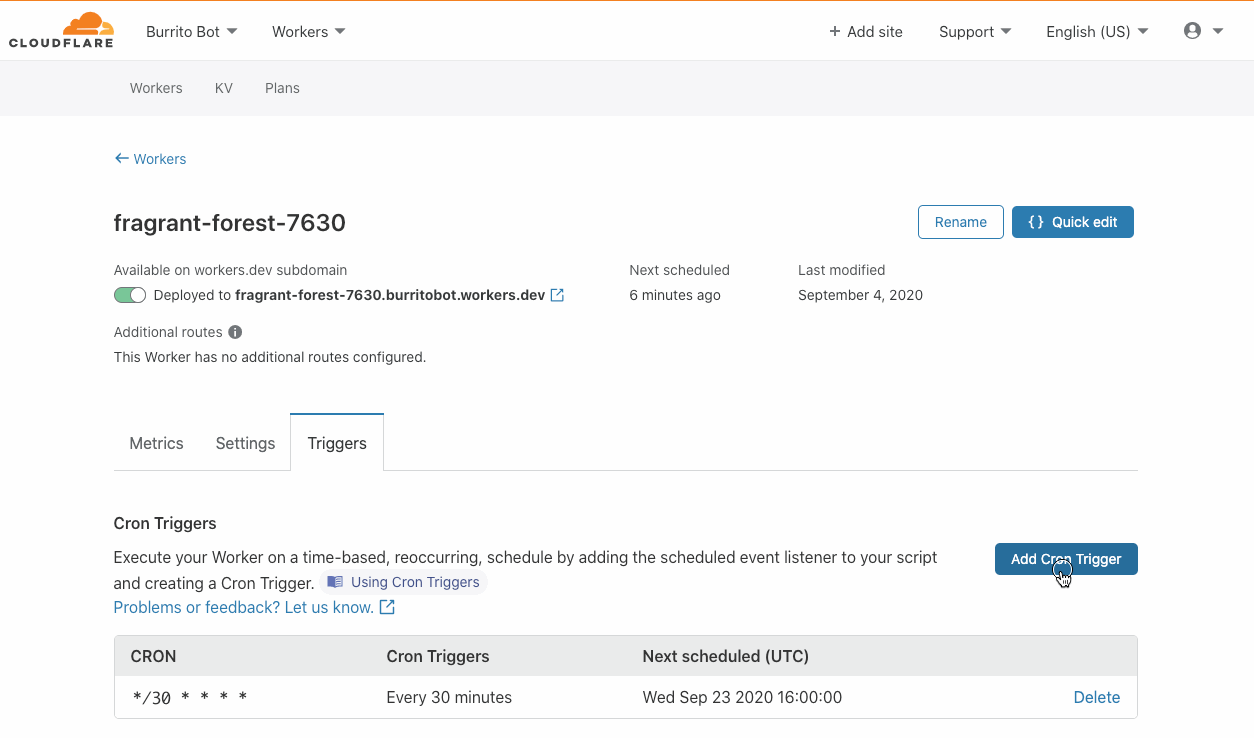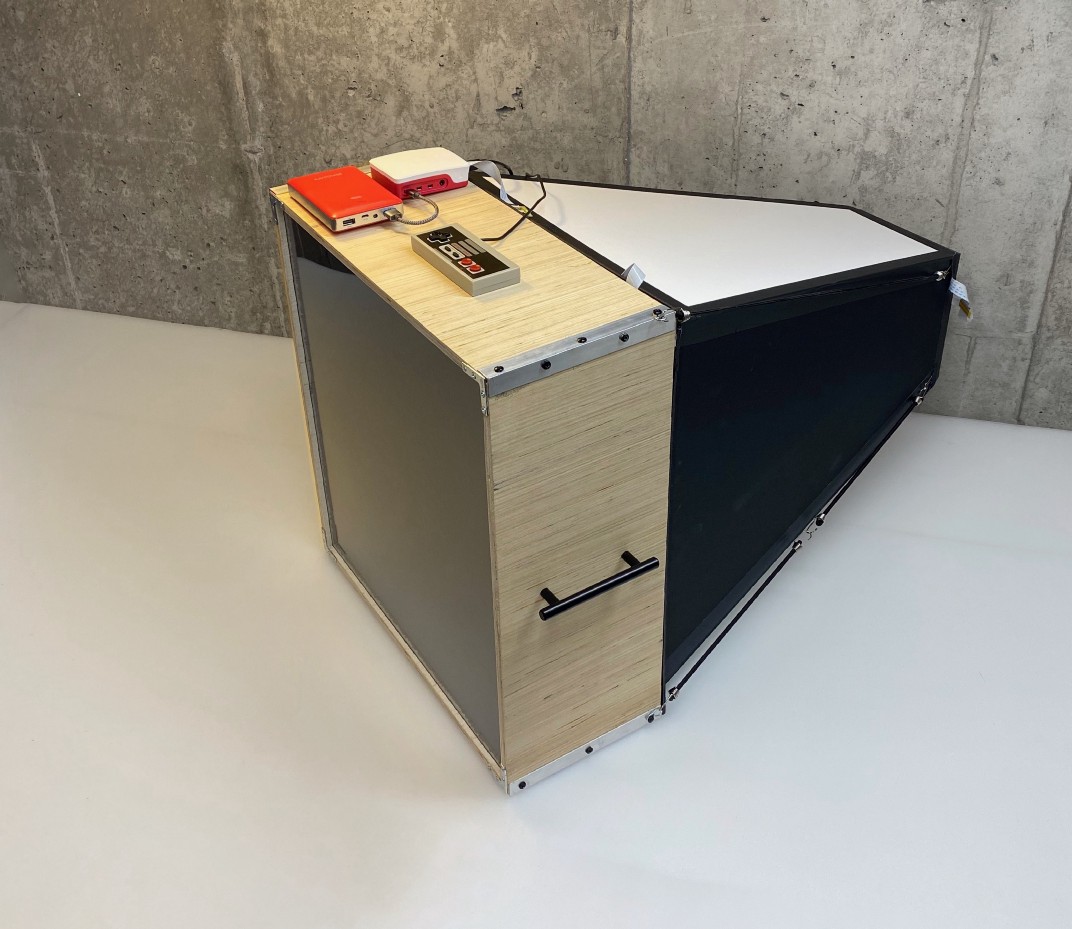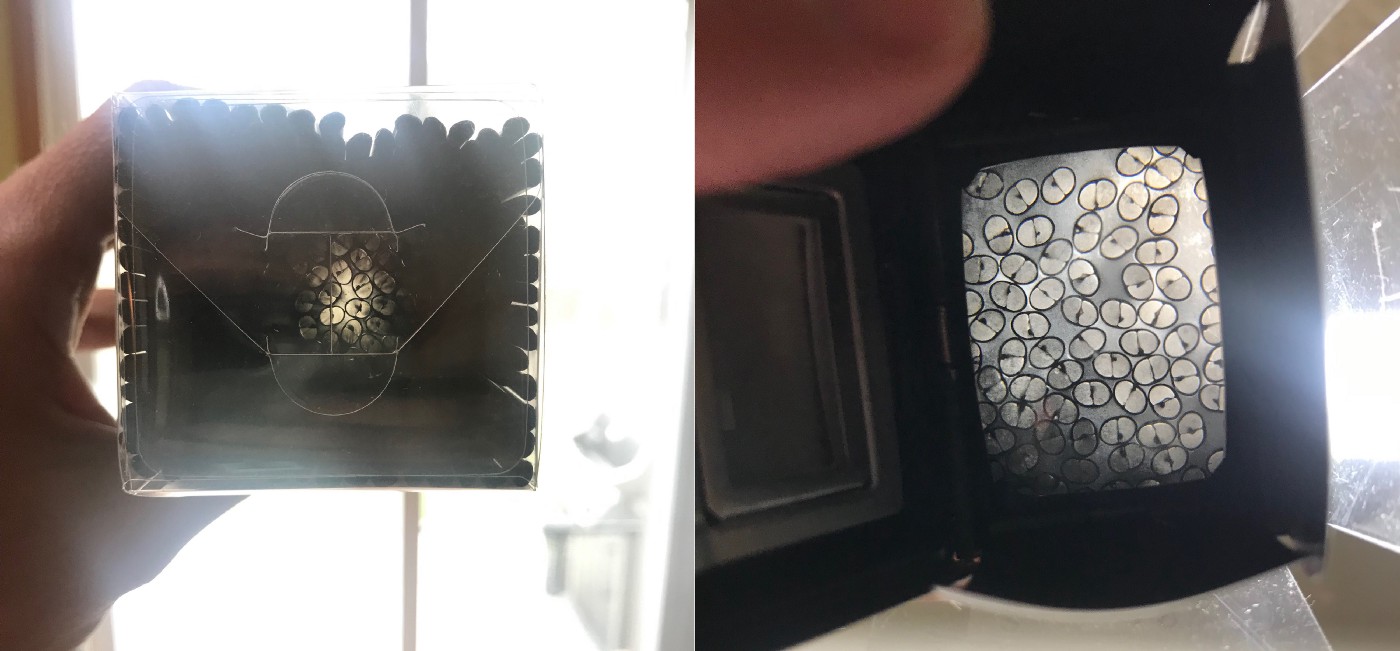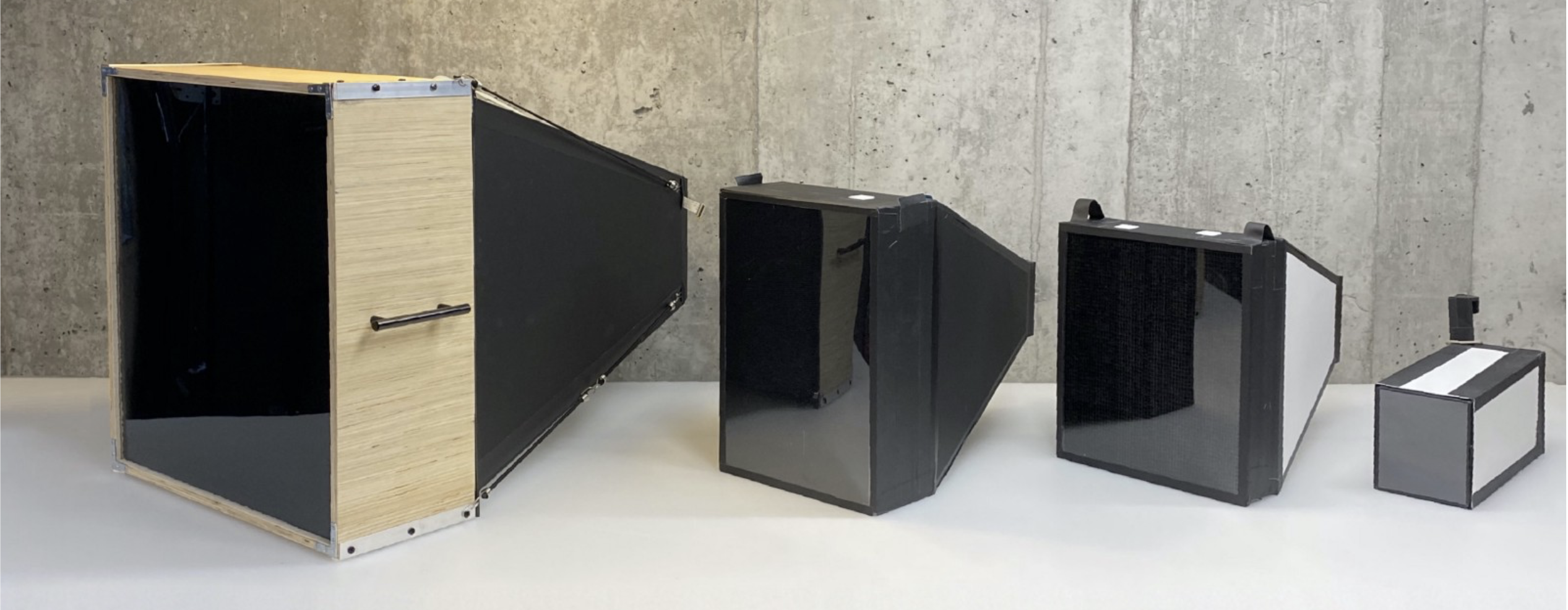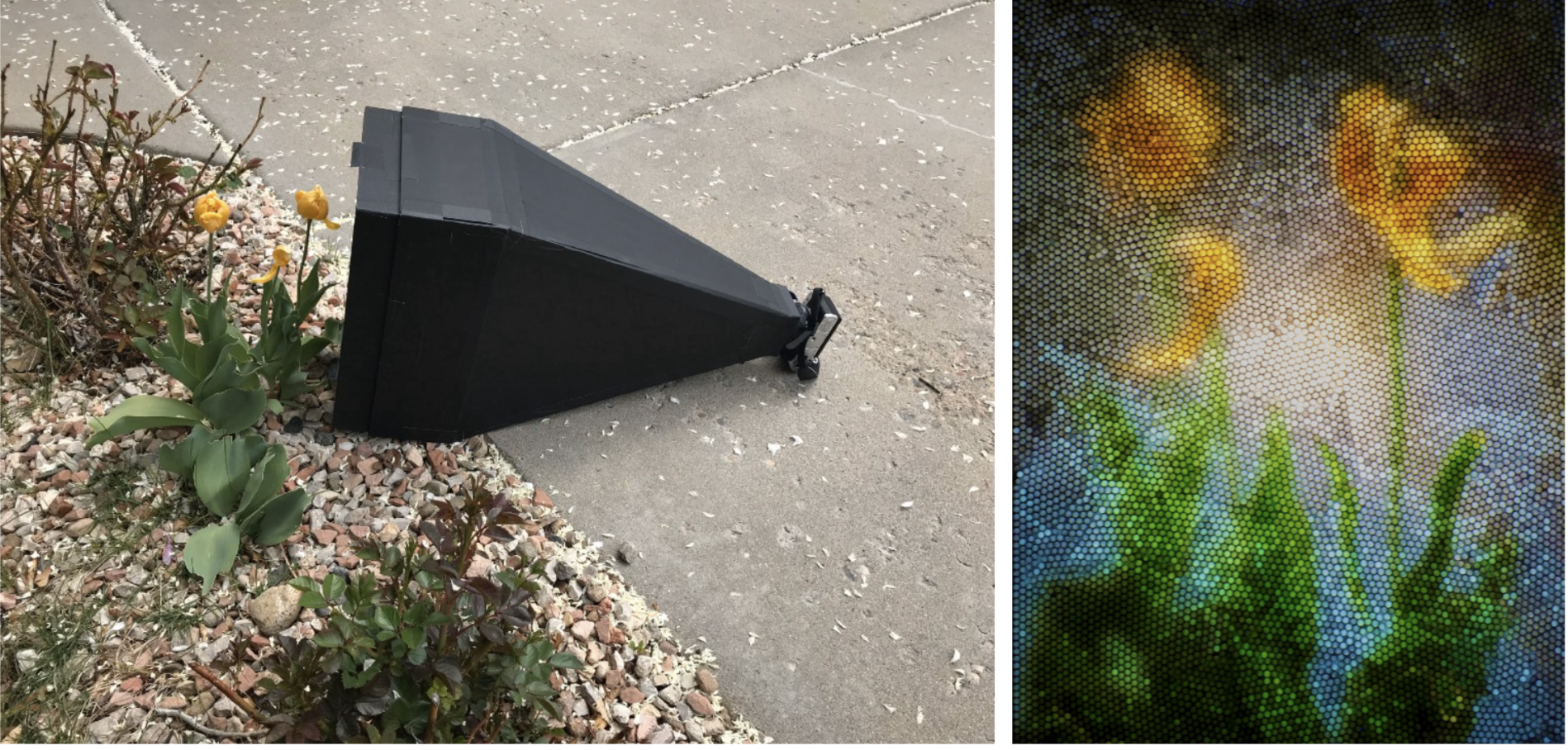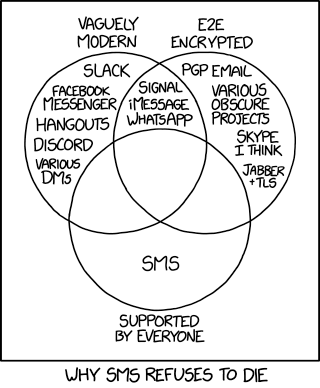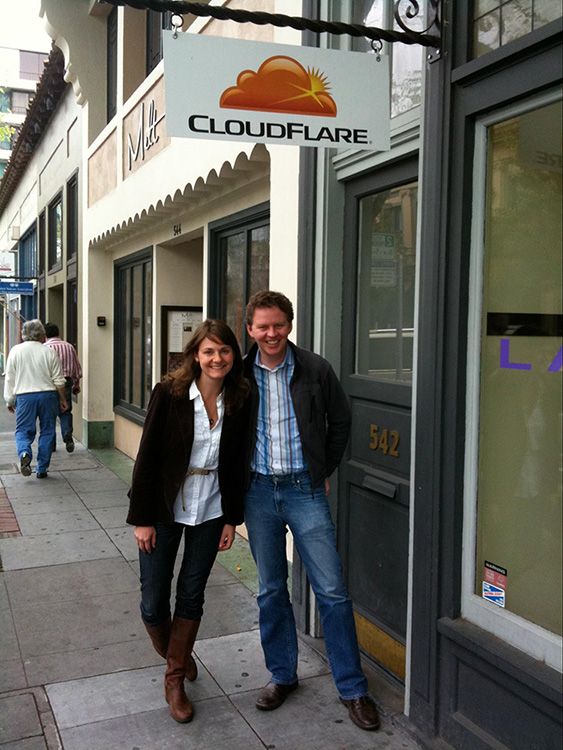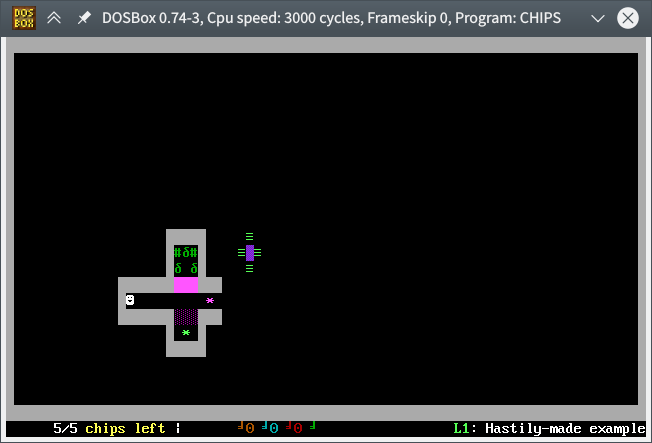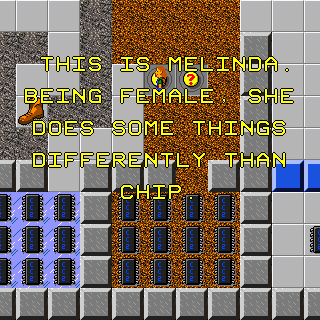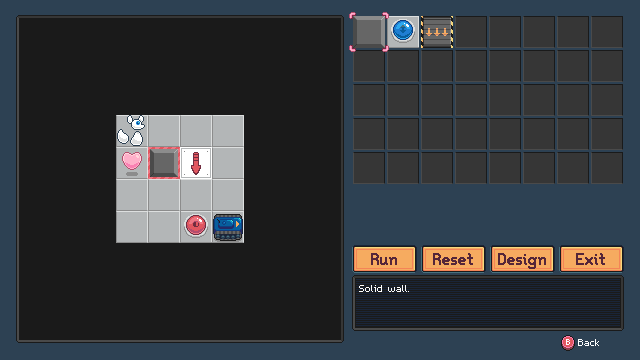Post Syndicated from Екип на Биволъ original https://bivol.bg/ruja-fincen.html
неделя 27 септември 2020
Всеки може да забогатее, обеща Ружа Игнатова, адвокат от Шварцвалд.
Милиони хора инвестираха в нейната цифрова валута. Но това беше огромна измама – и от „Криптокралицата“ няма и следа.
Царството
Революционерката организира тържество в бялата си вила на Черно море. Поканени са само няколко десетки души в елегантни рокли и смокинги, седят на кръгли маси в градината, шампанското е изстудено до басейна. Домакинята се забелязва, тъй като през тази лятна нощ в Созопол, България, тя е облечена в рокля с блестящи камъни и с тъмно лилаво червило. Последователите й с благоговение я наричат „Д-р Ружа“ или „Криптокралица“. Тя е кралицата на своя собствен свят.
Ружа Игнатова, тогава на 37 години, управлява създадената от нея дигитална валута, която би трябвало да разруши силата на банките.
Обещанието е, че хората трябва да получат обратно контрола върху парите. С „Onecoin“ всеки трябва да може да забогатее, а не само елитът на финансовия свят. От гледна точка на техните последователи, самата Криптокралица е най-доброто доказателство, че това може да работи.
На снимка, която беше публично оповестена от партито през юли 2017 г., Ружа Игнатова може да бъде видяна да танцува сама на сцената в 4:58 сутринта, с протегнати ръце и затворени очи. Сякаш готова за излитане. И до днес това е последният запис на Криптокралица – ръководител на една от най-големите мрежи за измами в света, която все още не е разбита.
Компанията все още съществува, поне на хартия.
Луксозният фон на празника е нейна собственост, имотът включва вила, басейн, лозе и триетажен частен хотел.
Изглежда тя сама е изградила всичко. Като младо момиче се премества с родителите си и по-малкия си брат от България в Германия, в Шварцвалд, където баща й изкарва прехраната си от търговия с автомобилни гуми. Игнатова учи право, получава германско гражданство и в крайна сметка се връща в България, за да влезе в международния финансов свят от София. Тогава милиони хора вярваха в успеха на Криптокралицата. Милиони хора инвестират в Onecoin.
Докато слънцето залязва, гостите на партито танцуват под песните на специално поканената от САЩ поп-певица Биби Рекса, над морето горят фойерверки, посред нощ започва да вали сняг, защото служител току-що е изстрелял снежно оръдие . Всичко изглежда възможно. „Алиса в страната на чудесата“ е мотото на партито, с което Ружа Игнатова празнува кръщенето на дъщеря си тази вечер.
По-малко от три месеца по-късно Криптокралицата ще изчезне.
Според ФБР тя се качва на самолет на Ryanair до Атина на летище София около 25 октомври 2017 г., очевидно с нищо повече от чанта като багаж. След това следата й се губи и не само ФБР, но и няколко прокурори по целия свят я търсят. Германски следователи също.
Защото Игнатова и нейните съучастници само се преструваха, че са изградили истинска, надеждна криптовалута – и то с шеметен успех.
Според изтекли фирмени документи от Onecoin, с които разполага SZ, мрежата на Игнатова е откраднала поне 5 милиарда евро. Самата компания отказва коментари на твърденията.
За изчезването на Игнатова се носят всякакви слухове. Дали е избягала, защото е усещала дъха на ФБР и се е страхувала да не бъде разкрита? Банките ли я отвлякоха, както вярват поддръжниците й? „Д-р Ружа“ винаги е имала поне двама телохранители със себе си, когато е карала из София брониран Лексус, защото, както се казва, е имала работа с опасни хора? Хора, човешкият живот на които не струва много.
В Досиетата FinCEN и други изтекли документи, за които SZ, NDR, WDR и Buzzfeed News съобщават от тази седмица, има редица статии, върху които се появява нейното име. Те дават възможност да се тръгне по следите на изчезналите милиарди и да се възстанови по-точно как се е стигнало до гигантската измама.
Обещанието
Всичко започва през юли 2014 г. Повече от 3 години преди изчезването на Криптокралицата, първата публикация на компанията се появи във Facebook. На снимки, които Onecoin публикува няколко месеца по-късно, основателката на компанията седи в 4-звезден хотел в Хелзинки на маса с много мъже, с пастет от сьомга и дива патица.
На пръв поглед Onecoin изглежда като една от безбройните стартиращи финансови технологии, много от които бяха създадени по това време. През 2008 г., в разгара на финансовата криза, разработчик на софтуер с псевдоним Сатоши Накамото – зад който може да се крие екип, който все още не знаем със сигурност – изобретява Биткойн, първата крипто-валута. Така дигиталните пари са извън банковата система. През 2014 г. започват да се разпространяват истории, че хората са станали невероятно богати с тези пари. Но това е само началото, вашата крипто-валута ще създаде много повече богатство, обещава Ружа Игнатова.
Новите Onecoins са подобни на Bitcoin, но уж решават техния основен проблем: едва ли някой разбира как да използва цифровите пари, камо ли как работят. Onecoin, от друга страна, казва Игнатова от сцените по
целия свят, най-после е крипто-валутата за масовия пазар – удобна за използване, сигурна, лесна за разбиране, без непредсказуеми колебания на обменния курс. Една монета за всички. Onecoin.
Ако искате да инвестирате, трябва да закупите така наречения пакет за обучение. Тези пакети струват между няколкостотин и десетки хиляди евро, най-скъпите в даден момент дори 118 000 евро и дори те все още
намират купувачи. Пакетите съдържат подходящото количество Onecoin, както и указания, които обясняват какво представляват криптовалутите и как функционират финансовите пазари.
Класическите пари, например еврото, получават стойността си от централната банка. Тя решава колко пари се отпечатват и колкото повече се отпечатват, толкова повече стойността на парите, които вече са в обращение, пада. Това дава на централната банка значителна власт. Гражданите трябва да се доверят, че не просто ще включат пресата, за да помогнат на банките и компаниите да спечелят повече пари – и по този начин рискуват монетите и банкнотите в обращение да стават все по-малко ценни.
Няма централна банка за криптовалути.
Хората не разчитат на държавна институция, а на други инвеститори, с които са свързани в компютърна мрежа.
Те се доверяват, че подобно на златото останалите членове ще купуват своите крипто-монети от тях на същата или дори по-висока цена.
Златото обаче има един недостатък – твърде е грозно да се плаща с него в пекарната. Това е възможно при крипто-валутите – при условие, че в определен момент хлебарят се доверява и на стойността на тези монети. Така че цялата схема крие висок риск.
Onecoin дори приема аналогията на крипто-валутите и златото буквално. Игнатова хвърля златна монета от сцената на рекламно шоу в хотел в Дубай през май 2015 г.
Тя съобщава на английски, с частично немски, отчасти източноевропейски акцент, че Onecoin сега, за разлика от Bitcoin, е подплатена със злато. То ще бъде скрито под морето. Толкова тайно, че самата тя никога не го е виждала.
По това време брокерите на компанията викаха в микрофоните си във все повече и повече държави, казвайки им колко бързо човек може да забогатее с Onecoin. На едно от първите събития в САЩ гигант на име “Д-р Пробив” троши тухли с ръка на сцената, докато развеселява публиката. „Ще имате финансов пробив!“ – бам! – “ще
разбиете финансовите си проблеми!” – бам! „Беше като инцидент“, казва експерт по криптовалута, който е бил там. – Просто не можете да отклоните поглед. Такива шоута се провеждат и в германските градове, като „Супер събота“ в хотел в Мюнхен.
Всеки, който се присъединява към Onecoin по това време, получава звучното название „Независим маркетингов сътрудник“ и комисионна за набиране на допълнителни инвеститори. Когато тези нови членове
въвеждат на свой ред нови хора в мрежата, получават част от техните комисионни и т.н. Така че има голям стимул за набиране на все повече сътрудници. Класическа пирамидална схема.
Обещанието за новата валута пълзи навсякъде. Обикновено приятели или познати ви разказват за Onecoin, убеждават ви да дойдете в някое от шоутата. Частният и бизнес микс, доверието в продукта и в продавача. Идеята за внезапна измама е толкова ужасна, че инвеститорите трябва да потушават възникващите съмнения. Мнозина се оттеглят в паралелен свят в Интернет, където са сред себеподобните си. Последователите на Onecoin имат свои собствени поп-песни, езикови кодове и дори собствени сигнали за ръце, по които се разпознават – О, образувано от показалеца и палеца.
Крипто-кралете и тяхното кралско домакинство насърчават тази изолация през годините, като обявяват предупрежденията за измама за „фалшиви новини“, разпръснати от ревниви „хейтъри“, или от
„биткойнъри“, или от банките. Инвеститорите стават фанатици. Някои изгубват вяра в Onecoin само когато вече са загубили всичко останало.
Изобретателката на Onecoin нагло твърди, че е доказала, че е решила почти всички технически проблеми на крипто-валутите, но дори не предполага как това е трябвало да успее. Понякога си противоречи. Следователно хората, които са запознати с крипто-валутите, не възприемат сериозно клонирането на биткойни дълго време. Медиите съобщават много малко, в редакциите вероятно намират темата за твърде специфична или не знаят достатъчно, за да вдигнат аларма. Очевидно никой не се чувства отговорен – и Onecoin става все по-голям и по-голям. Наистина голям.
През юни 2016 г. Ружа Игнатова ще се появи на една от най-големите сцени в Европа, в лондонската Арена Уембли. Все още можете да видите изпълнението в YouTube днес. Песента “Това момиче гори” ги приповдига, искри пръскат от пода на сцената.
Тогава тя стои там, както винаги в такива случаи, в блестяща рокля, за да вдигне в приветствие хиляди последователи. „Обичам те“, крещи един.
Две години след старта във Facebook, тя твърди, че Onecoin вече е №2 в криптовалутите. Скоро биткойн също ще бъде надминат. И тогава, “един ден”, “Глобалната борса” ще бъде включена, тогава всеки ще може да обменя своите Onecoins във всяка валута. Но въпреки успеха, тя многократно е обвинявана в нарушаване на философията на крипто-валутите.
Защото всъщност крипто-валутите обещават анонимност: ако няма централна банка, която да води отчет за всичко, никой не обръща внимание кой на кого изпраща пари.
Onecoin обаче нарушава това правило. Компанията рекламира “централизиран подход”, уж за предотвратяване на пране на пари, финансови измами и финансиране на тероризма. „Хората, които трябва да извършват анонимни плащания, не влизат в нашата мрежа“, казва Игнатова на своите приветстващи я поддръжници.
Колкото повече хора се доверяват на Onecoin, толкова по-тясна става мрежата от лични отношения. “Момчета, ние сме по-голямата общност!”, казва Игнатова. “Ние решаваме каква е философията на криптовалутите!”
Мрежата става толкова голяма, толкова объркваща, че вече не изглежда като да има централен орган, който поддържа общ преглед и контрол – а сякаш Onecoin е безплатна, независима мрежа. Като истинска крипто-валута.
Миналото
По време на появата си на Арена Уембли Ружа Игнатова живее в двуетажен мезонет в луксозния лондонски квартал Кенсингтън, пълен със скъпи произведения на изкуството. Тя притежава и апартамент в Дубай, който струва около 2,5 милиона евро. Тя носи бижута и изключително скъпи вечерни рокли, дори когато просто седи в офиса и пише имейли, както казва бивш служител на Onecoin.
Тази показност разкрива много за младата жена, каквато е била Ружа Игнатова, преди да се превърне в Криптокралица.
През 1990 г. семейството й се премества от България в Шрамберг в Шварцвалд, сънлив град с разрушен замък. Там тя живее, заобиколена от южногермански полуфабрикати, „в тясна къща“, както си спомня един от местните хора. Ружа Игнатова бързо напредва в училище, дори прескача трети клас, въпреки че трябва да учи езика отново.
В оценка за стипендия учител в гимназията се възхищава от хитростта на „топ-ученичката“ Ружа Игнатова. Нейните ролеви изпълнения, които тя ще използва широко в по-късния си живот, са „обмислени, стимулиращи и понякога направо страстни“.
Младата жена с черна коса обича да носи високи токчета, ярко червило и екстравагантни рокли, съобщават бивши съученици от Neue Rottweiler Zeitung.
Игнатова се смята за ексцентрик. Според книгата й „Abitur“, тя предвижда бъдещия си живот по следния начин: „Ще уча право в Хайделберг, тогава ще бъда невероятно успешен адвокат, ще се омъжа за богат човек, ще имам деца и ще прекарам пенсионните си години в един от неговите (моите!) Карибски острови“.
Тя прави докторска степен по право, работи в консултантската компания за управление McKinsey и след това се премества в управителния съвет на българска компания за управление на активи.
Шефката й се казва Цветелина Бориславова, една от най-богатите жени в страната и бивша любовница на днешния премиер Бойко Борисов. Според информацията на ЦРУ Бориславова е изпирала парите от престъпния бизнес чрез Българската американска кредитна банка, която тя притежава: Нелегални сделки с нефт. Търговия с метамфетамин. Това е светът, в който Ружа Игнатова сега навлиза на 29-годишна възраст. Свят, в който има много пари, които трябва да се вземат.
(Тук Зюддойче Цайтунг цитира следния параграф от грамата на посланик Байърли от 1996 г. изтекла в Wikileaks и първо публикувана от Биволъ. “13. (S/NF) Обвинения в миналото свързват Борисов със скандали с източване на гориво, с нелегални сделки в комбинация с Лукойл и със сериозна контрабанда на метаамфетамини. Информацията от SIMO е в потвърждение на тези обвинения. Смята се, че Борисов е използвал поста си, като глава на българските правоохранителни органи, за да прикрие криминалните си деяния, а жената, с която съжителства, Цветелина Бориславова, управлява голяма банка, която е била обвинявана в пране на пари за престъпни организации, както и в участие в незаконните транзакции на самия Борисов. Говори се, че Борисов има сериозни връзки с някои фигури от мафията, включително с Младен Михалев (наричан още Маджо), и с неговия бивш партньор от организираната престъпност Румен Николов (наричан още „Пашата”.” По това време банката на Цветелина Бориславова е СИБАНК, която тя впоследствие продава, преди да придобие БАКБ, Б.прев.)
Нито Бориславова, нито Борисов коментираха твърденията от доклада на ЦРУ по искане на SZ. Кабинетът на Борисов просто заявява, че всеки опит за установяване на връзка между министър-председателя и Onecoin или Игнатова е “манипулация”. Кои контакти Игнатова е осъществила по време на управлението на активите, остава неясно. Адвокатката оставя своя отпечатък едва, когато се появява отново в Германия през 2010 година.
По това време тя купува леярна за стомана в Алгой, Валтенхофен в Бавария. Тя отговаря за финансите, баща й е начело като инженер, майка й работи в офиса. Семеен бизнес.
Само след 2 години Игнатова е препродала компанията и 4 дни след това новият собственик подава молба за временен фалит – имало ли е грешни баланси? Вестник „Кемптен“ цитира новия управител за банкрута му, според който производствените мощности са демонтирани и транспортирани в България малко преди продажбата. Член на IG Metall си спомня, че парите също са изтекли преди сделката. Документите, лаптопите и твърдите дискове са унищожени за една нощ и файловете изведнъж изчезват. Няма и следа от собственика им.
Ружа Игнатова е изчезнала. Точно както тя ще направи отново няколко години по-късно.
Малко се знае за времето преди да се появи отново като Криптокралицата през 2014 г. Във всеки случай измамата в Алгой има последствия. През април 2016 г. Аугсбургският окръжен съд призна Игнатова за виновна за умишлено нарушаване на задълженията в случай на несъстоятелност, за измама в 23 дела и за нарушаване на счетоводни задължения.
Два месеца преди появата си на лондонската Арена Уембли Криптокралицата е осъдена на година и два месеца лишаване от свобода – присъдата обаче е отложена, „защото са налице условията за благоприятна социална прогноза“. Прокуратурата в Аугсбург изглежда по някакъв начин е избегнала факта, че по това време подсъдимата отдавна е била лице на компания, която рекламира нова световна валута със злато, скрито под морето. В отговор на въпрос оттам казват, че не е възможно да се провеждат интензивни разследвания на текущото финансово състояние на обвиняемия във всяко наказателно производство преди основното заседание.
Преписките не разкриват никакви индикации, които „биха предложили преглед на информацията, предоставена от обвиняемия в главното заседание“.
Откритието
През октомври 2016 г., половин година след осъждането на Игнатова и 4 месеца след нейното представяне в Лондон, телефонът на Бьорн Бьерке звъни. Норвежецът е признат експерт по блокчейн технологията, на която се базират крипто-валутите. Той си спомня разговора много добре и днес: обаждащият се казва, че предлага 250 000 евро годишно, включително апартаменти и коли в Лондон и София. Той работи за компания за криптовалута и иска да наеме Бьерке за разработване на блокчейн.
Криптовалутна компания без блокчейн? За да разбере защо Бьерке става скептичен, когато чува това, човек трябва да знае защо това не може да работи.
Да предположим, че притежавате биткойн. Какво ви пречи просто да го копирате и да го похарчите няколко пъти? Блокчейнът. С прости думи, всяка монета в крипто-валута има свой собствен цифров подпис. Блокчейнът е дълга верига от числа, в която се съхраняват подписите на всички монети в обращение.
Ако някъде се появят нови пари, чийто произход не може да бъде проследен чрез този низ от числа, системата автоматично отказва да плаща. Това предотвратява контрабандата на фалшиви пари – и не позволява на някой да пуска нови пари в обращение на воля, както централните банки правят с традиционните пари.
Тогава Бьерке е поискал да знае името на компанията, за която трябва да разработи блокчейна. Така си спомня днес. Обаждащият се казва само, че „засега няма мандат да разкрие това“. Само при второ
телефонно обаждане той му казва името: Onecoin.
Програмистът иска време да помисли за това. Той не възнамерява да приеме офертата и вместо това прави кратка оценка на компанията онлайн: „Тази луда нова крипто-валута вероятно изобщо няма блокчейн“. Това са само няколко реда, но когато международно известен експерт като него напише нещо подобно, тогава това има значение. Крипто-валута без блокчейн теоретично може да бъде произведена от всеки, който е в състояние да въведе числа в таблица. Тогава някой би бил централната банка на собствената си валута – и богат, колкото му харесва, с едно натискане на бутон.
Към този момент през октомври 2016 г. в Onecoin вече са се влели около 3,5 милиарда евро от повече от 2 милиона членове по целия свят, включително 56 948 от Германия. Дори от Антарктида, където малко хора живеят в изследователски станции, са направени три инвестиции. Това пише в изтекли документи от Onecoin.
Десет минути, след като разработчикът на блокчейн Бьерке публикува коментара в интернет, той получава съобщение. Така го разказва днес. Германските следователи искат да говорят с него. Много се интересуват от разработчика, резервиран е полет за него. Цивилни служители посрещат Бьерке на летището в Дюселдорф и го отвеждат в охранявана сграда с кола със затъмнени прозорци, през много защитени врати към стая за разпити. Това е Държавната служба на криминалната полиция в Северен Рейн-Вестфалия, Отдел за организирана престъпност.
Днес там потвърждават, че е разпитан „човек от Скандинавия“, за да предостави доказателства за измамата. Почти година по-рано спестовна банка подава жалба в Дюселдорф, след като в рамките на два дни по сметка, принадлежаща на Onecoin, са получени 705 транзакции на обща стойност 2,5 милиона евро. Банкерите определят процеса за съмнителен.
От октомври 2016 г. досега текат производства срещу 9 германски уанкойнъри, които са помогнали за създаването на пирамидалната схема в тази страна. Става въпрос за подозрения за групова бандитска измама, пране на пари, прогресивно придобиване на клиенти и предоставяне на финансови услуги без разрешение. Защото всеки, който предлага финансови услуги в Германия, всъщност се нуждае от разрешение. Onecoin няма такова.
Разследващите ме попитаха дали мога да докажа, че Onecoin няма блокчейн, казва Бьорн Бьерке днес. Отговорил е: да. Той разглежда по-задълбочено предполагаемия блокчейн от Onecoin в Държавната служба на криминалната полиция. След няколко теста му става ясно, че това е компютърен трик. Симулация.
Когато Бьерке се връща у дома, в интернет той публикува видеоклиповете, в които посочва техническите противоречия. Можете да ги видите и днес. Програмистът от Норвегия почти не подозира, че животът му ще се промени от този ден нататък.
Във видео-връзка той каза, че е бил тормозен от адвокати с искове за милиони и е получавал заплахи за смърт. Наложило се да смени жилището два пъти. Изглежда унил и обезсърчен. “Мислех, че са някакви малки мошеници, които правят 20, 30 милиона, след което продължават, за да започнат следващата измама. Не мислех, че ще видя оръжия“, казва програмистът.
Публично видео на страницата на уанкойнъри във Facebook показва как мъж стреля с картечница на стрелбище във Виетнам. След това изпраща съобщение до „хейтърите“. “Оставете ни да живеем!
Или ще умрете”, призовава той пред камерата. Той споменава само един от „хейтърите“ по име: “Бьорн, бъдете наясно, бъдете много наясно!”
След това Бьерке започва да разследва. Той иска да знае по-точно кого си е направил враг. Това, което открива, го тревожи. “Наистина лоши хора” са замесени в измамата, казва той във видео-разговора. Кои са те? Той не иска да каже нищо за това. Но има начин да се разбере. Трябва да следвате следите на изгубените пари.
Досиетата FinCEN помагат за това.
Парите на инвеститорите в Onecoin текат във всички посоки по цялата планета, чрез почти неуправляема мрежа от компании и сметки, върху която Ружа Игнатова и нейният кръг тъкат от години. Пътуването започва, например, в Гревен близо до Мюнстер, в International Marketing Services GmbH. Германските инвеститори в onecoin са превели парите си там. Следващата спирка е корпоративна мрежа, базирана на Британските Вирджински острови. След това се оказва във фонд в Обединените арабски емирства. Или в банка на Каймановите острови. Или в Ирландия.
След това парите изтичат от тези пощенски кутии, например в недвижими имоти в стария град София. Или сделка за петролно поле в Мадагаскар. За да подпечатат покупката му, Ружа Игнатова, китайски милиардер и бизнесменът Нийл Буш, брат на бившия президент на САЩ Джордж Буш, се срещат в Хонконг през август 2016 г.
Буш е заместник-председател на съвета на директорите на енергийната компания, която трябва да управлява бизнеса. Твърди се, че той е получил 300 000 долара “надбавка за разходи” за срещата, според окръжния прокурор на Ню Йорк. Буш остави поканата от SZ за среща без отговор. В сделката участва и адвокат от Мюнхен, който също не отговаря на покана за разговор. Очевидно Игнатова го е използвала, за да не се появи името й във вестниците. По причини, които могат да се предположат – по-късно прокурорът ще нарече цялата сделка пране на пари. Съгласно споразумение, голяма част от покупната цена от 340 милиона щатски долара за нефтеното находище трябва да бъде платена в Onecoin – пари, които Игнатова може да генерира с натискането на един бутон.
Прокуратурата в Ню Йорк вече подозира какви хора може да привлече подобно обещание за пари с един клик на бутон. Според констатациите на разследващите, в Onecoin работи зловещ шеф по сигурността, за когото се твърди, че е „международен наркодилър в голям мащаб“.
Това би подхождало на Христофорос “Таки” Аманатидис, известен като наркобос и лидер на бруталната “Банда на чуковете”. Парите на Onecoin текат през сметките на приятелката му, бивш български модел, в бизнес с недвижими имоти, както научи в. „Капитал“ в България. Аманатидис, който избяга от властите в Дубай през 2012 г. и се твърди, че управлява бизнеса си оттам, не може да бъде открит за покана за среща от SZ.
Американски адвокат, който организира част от системата за пране на пари за Onecoin, пише на приятелката си чрез Whatsapp от София, че постепенно свиква с охраната: „Те не могат да носят оръжията си на колана, но имат вид изискана мъжка чанта с дръжка през рамо. Всички знаят. Дори полицията е учтива. Лол“.
Наследникът
Когато една година по-късно Игнатова изчезва внезапно, през есента на 2017 г. нейният брат Константин заема мястото й. По това време Onecoin е една от най-силните български компании по отношение на оборота, централата е в София. Братът получава офис на „Светая светих“, четвъртия етаж, припомня бивш служител. Точно в съседство, в кабинета на сестра му, щорите бяха спуснати и никога повече не се повдигаха.
Константин е с 6 години по-млад и съвсем различен тип от елегантната си сестра: Неговият стил е бейзболни шапки и татуировки. Преди да започне в Onecoin, той е работил в Porsche Logistik близо до Щутгарт като шофьор на мотокар. „Консти Кекс“, както понякога се нарича във Facebook, обича да се будалка, на Бъдни вечер лежи на масата в коледен пуловер и го документира с усмивка в Instagram.
Малкият брат на Криптокралицата става лицето на особено грозната втора фаза на измамата. Докато мозъкът вече не може да бъде открит, по света все повече и повече страни предприемат правни действия срещу лидерите на мрежата. Много органи за финансов надзор забраниха търговията с Onecoin, включително германската Bafin. Все още има страни в онези части на света, където много хора нямат достъп до банки, а националните валути са слаби. Такива страни се възползват най-много от крипто-пари, проповядваше Игнатова при изявите си.
Изтекли документи на Onecoin показват, че в средата на юни 2017 г. броят на членовете е нараснал особено силно в Латинска Америка, на Индийския субконтинент и в Африка. В този момент се говори за около 3,1 милиона членове по целия свят.
Когато Константин Игнатов посещава Уганда в Източна Африка, една от най-бедните страни в света, е придружаван от полицейски ескорт и той бива аплодиран от ученици на пътя като чужд държавен гост. Това може да се види в публично видео във Facebook. По-късно ще бъде попитан в съда в Ню Йорк дали може да си спомни екскурзията. Можеше ли да си спомни, че хора от цял континент са пътували там с автобуси дни наред, за да го чуят? Мислил ли е, че ограбва тези хора? Константин Игнатов винаги казва: да. Просто да. Той оставя заявката на SZ за среща без отговор.
През март 2019 г. той беше арестуван от агенти на ФБР на летището в Лос Анджелис и тази история получи внезапен решаващ обрат: Игнатов сключи сделка с прокурора. Той става ключов свидетел срещу империята на сестра си.
Константин Игнатов ползва същия адвокат като световноизвестния наркобарон Хоакин “Ел Чапо” Гусман или Джон Готи, кръстник на американската Коза Ностра. Сега Джефри Лихтман защитава “Консти Кекс” от Шрамберг.
На 5 ноември 2019 г. той се явява като свидетел в синьо затворническо облекло пред съда на южния район на Ню Йорк, за да даде показания под клетва срещу адвокат, който е прал пари за Onecoin.
Сестра ми Ружа, Крипто-кралицата, знаеше, че властите и вероятно други хора – са по горещи следи на стъпките й, казва той. Тя е получила информацията за разследването й от ФБР, от бивш шеф на оперативния отдел на Люксембургската тайна служба.
Според съобщения в пресата, незабележимият мъж с очила е замесен във всякакви скандали на тайните служби, включващи и тогавашния министър-председател на Люксембург Жан-Клод Юнкер, а за Onecoin се твърди, че е управлявал един вид частна тайна служба. Той оставя заявката за среща със SZ без отговор. Чрез този човек, казва Константин Игнатов пред съда, сестра му е разбрала кой я е предал.
Игнатова е омъжена за адвокат от Франкфурт и има дъщеря от него, чието кръщение отпразнува на екстравагантното парти край басейна. Но има и друг мъж – предприемач, който също е съден в САЩ за съучастие в измамата с Onecoin и за пране на пари. В телефонно обаждане, записано от американски следователи, Игнатова може да се чуе притеснена, че трябва да внимава и да използва само криптирани комуникации. “Можем да получим достъп до имейла ви за 24 часа. Не можете да предотвратите тези глупости”. Тя може да получи всичко, което пожелае, в рамките на 24 часа. “И ако мога да направя това, всеки може.” Тя няма представа на какво са способни „тези руски момчета“.
Двамата са искали да напуснат съпрузите си, да се оженят и да имат деца, казва Игнатов в съда, като цитира сестра си. Но тя не била сигурна дали любовникът й казва истината, дали чувствата й наистина ще бъдат отплатени. Затова тя помолила своя човек от тайните служби от Люксембург да влезе в апартамента на любовника й. Купен е апартамент под неговия и в тавана е пробита дупка за поставяне на микрофон в спалнята му.
Това, което Игнатова трябваше да чуе, надмина най-лошите й очаквания, казва брат й. Той съобщава за среща със сестра си малко преди бягството й през октомври 2017 г. „Тя беше на предела на нервите си. Нейният любовник и съпругата му откраднали парите й. Щяха да й се подиграят. И мъжът, за когото тя искаше да се омъжи, я
предаде“, казва Константин. В съдебната зала се възпроизвежда телефонен запис, който звучи като последно прощално телефонно обаждане. „Никога не съм мислила, че ще бъдеш такъв безгръбначен задник“, казва Игнатова.
Жената, която излъга милиони хора напълно открито, казва, че не може да приеме, ако я излъжете.
Половин година след бягството на Ружа през октомври 2017 г., Константин Игнатов казва на съда, че един човек му се е обадил. Той се е представил като високопоставен член на рок бандата Hell’s Angels и го е повикал в Цюрих. Там в един хотел в устата му е пъхнат пистолет: “Казаха ми, че всяко обещание, което им е дадено, трябва да бъде изпълнено. И те ми казаха, че парите, които инвестират във фирмата, струват много повече от живота ми.”
Ами ако престъпниците са по-бързи от властите? Ами ако първо намерят сестра му?
Информатор от компанията докладва на SZ за разговор с шефа на тайната служба на Люксембург Onecoin година след изчезването на Игнатова. Според този мъж, съобщава подателят на сигнала, тя е била видяна малко след бягството си в Солун, където се е качила на микробус на Porsche с петима силни на вид мъже. След това вече няма признаци на живот, няма онлайн активност, нищо. Това е много необичайно.
Той подозира, че Криптокралицата е мъртва.
Но има и други теории. Според информация на Би Би Си Игнатова е била видяна в ресторант в Атина, сервитьор я е разпознал в центъра на антуража й. Наистина ли беше тя? Или може би е отишла в нелегалност в Русия, под закрилата на „могъщ човек“, за когото брат й казва, че се е запознала преди да изчезне?
Търсенето на Криптокралицата е като преследване на фантом. Веднага щом се приближите, той се разсейва. И не само Игнатова изчезна, но и по-голямата част от плячкосаните пари. Константин Игнатов разказа пред съда за “касовите стаи” в няколко държави – апартаменти, в които стотици милиони са били складирани в брой. Трикратни милионни суми са откраднати няколко пъти. Сумите, които са я изкачили на върха на пирамидата, все още трябва да са астрономически.
Бъдещето
В края на 2019 г. централата на Onecoin в София ще бъде опразнена и съдържанието на офисите ще бъде заредено в ръждясал руски камион. На хартия бивш охранител се използва като управител. Важен ръководител на измамата е арестуван в Тайланд, екстрадиран в САЩ и обвинен там. Прокуратурата в Билефелд съобщи, че никой от деветте германски обвиняеми все още не е официално арестуван. Основният обвиняем и до днес се смята за беглец.
Бьорн Бьерке, норвежкият разработчик на блокчейн, сега изяснява жертвите на измамата, той знае техните истории. На семейства, които се разпадат. На продадени къщи. На мисли за самоубийство. Бьерке изглежда измъчен пред камерата, в дървената си къща някъде в Норвегия, скрита от Onecoin. “Гадно е, че не мога да помогна на жертвите“, казва той. Не всички от тях обаче виждат себе си като жертви.
Бизнесът е свършен, но мрежата около виртуалните монети е жива. Някои привърженици биха могли да ме малтретират, опасява се за себе си Бьерке. Защо е оставил балонът да се спука, питат те, всичко можеше да продължи така, “отдавна бяхме милионери”. В Германия също около 3700 членове на група за чат в Telegram обменят информация за предполагаемата „криптонизация“. Те отхвърлят всички съобщения за измамата като фалшиви новини, контролирани от банковата система или от „хейтъри“. Точно както им каза Игнатова. Някои от тях все още се надяват, че един ден Криптокралицата ще се върне.
Може би ще го направи. Може би Ружа Игнатова просто се е придържа към собствения си план. ФБР намери стар имейл от 2014 г., когато всичко е започнало. В него тя изброява какво да прави, ако нейният бизнес модел някога трябва да бъде разкрит. Най-отгоре пише: „Вземете парите и бягайте“.
Автор: Филип Боверман, илюстрации: Верена Гериг и Кристиан Тонсман
Превод: Биволъ
Илюстрация: Разследването за Ружа Игнатова е на заглавната страница на “Зюддойче Цайтунг” от събота, 27 септември 2020 г.


